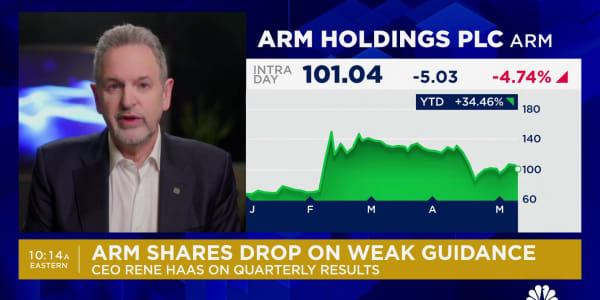In the land of Hindenburg Omens, January Barometers and Super Bowl Effects, few supposed indicators get investors' toes tapping as much as the Golden Cross.
The indicator happens when short-term moving averages (often the 50-day version) cross above a longer-term average (usually the 200-day). The resulting effect is supposed to be a big rally on Wall Street as the market absorbs all the enthusiasm over stocks.
This is important now because the closely watched Dow Jones industrial average has just experienced the vaunted "cross," triggering hopes for an even greater rally off what has been a strong 2½ months. There hasn't been a Dow Golden Cross for more than four years. (The Golden Cross's evil twin is known as the "Death Cross," which involves the shorter-term moving average breaking below the longer-term.)
Turns out all the hoopla may be for naught.
A closer look at the history of the Golden Cross in fact shows little predictive power. Sometimes the market goes up afterward, sometimes it goes down, at least for the one-month and three-month periods ahead. The results have been more consistently positive over a six-month period, but such a long duration makes tying it to a technical market event at least a little specious.
50 years of Golden Crosses
| Date | Next month (%) | 3 months (%) | 6 months (%) |
|---|---|---|---|
| 5/19/1969 | -7.5 | -15.2 | -10.7 |
| 9/8/1971 | -2.9 | -7.1 | 2.3 |
| 2/4/1980 | -5.4 | -7.3 | 6.4 |
| 6/27/1980 | 6.2 | 8.4 | 9.6 |
| 9/13/1982 | 10.5 | 11.9 | 22 |
| 4/11/1990 | 3.4 | 7.4 | -10.4 |
| 2/26/1991 | 1.7 | 1.7 | 6.1 |
| 2/5/1993 | 1.1 | 0 | 3.1 |
| 9/12/1994 | 0.4 | -4.5 | 4.5 |
| 12/16/1998 | 6.2 | 13.7 | 23.3 |
| 12/3/1999 | -1.5 | -8.1 | -8 |
| 9/5/2000 | -4.8 | -7.9 | -5.9 |
| 2/13/2001 | -9.9 | -0.2 | -4.5 |
| 5/20/2003 | 8.4 | 10.9 | 15 |
| 8/2/2004 | -0.1 | -1.7 | 2.4 |
| 7/22/2005 | -1.2 | -2.2 | 0.2 |
| 9/8/2005 | -3.4 | 2.5 | 3.6 |
| 12/1/2005 | -0.3 | 1 | 3.1 |
| 10/1/2010 | 3.3 | 6.8 | 13.8 |
| 1/3/2012 | 3.8 | 7 | 3.8 |
| Average | 0.4 | 0.9 | 4.2 |
| %positive | 50 | 50 | 75 |
| Avg all periods | 0.6 | 1.8 | 3.7 |
Source: Source: Bespoke Investment Group
The cross is "generally seen as a very bullish indicator for stocks … but is it?" Liz Ann Sonders, chief investment strategist at Charles Schwab, said in a report for clients this week. "Performance following Golden Crosses was no better than the performance over any random time period. It was up exactly half the time over the next month and three months; while returns and probabilities did increase for the six-month period."
Technical indicators are proliferating these days as investors navigate a choppy and unpredictable market.
Stocks had been in an aggressive correction since mid-August, but seemed to find a bottom on Feb. 11. Since then, the market has been in rally mode, with the notching a 15 percent price gain during the period.
While Bespoke's research found little discernible effect from the Golden Cross, the firm did show that another technical indicator, namely all 10 S&P 500 sectors breaking through their 200-day moving averages after not doing so in unison for more than a year, has been a strongly bullish indicator. Bespoke's Paul Hickey said investors shouldn't read too much into the Golden Cross other than being "a feather in the cap for market bulls."
Sonders is even more skeptical, with Schwab holding a "neutral" outlook on the market. That doesn't necessarily signal pessimism, but rather that investors should resist the temptation to add to positions in the current market.
"The net is that there are competing forces at work for the market at present," she said. "To me, these conflicting forces suggest maintaining our 'neutral' rating on U.S. stocks. That means investors should remain at their strategic equity allocation, but be extra mindful of adopting rebalancing strategies in the interest of risk control."







